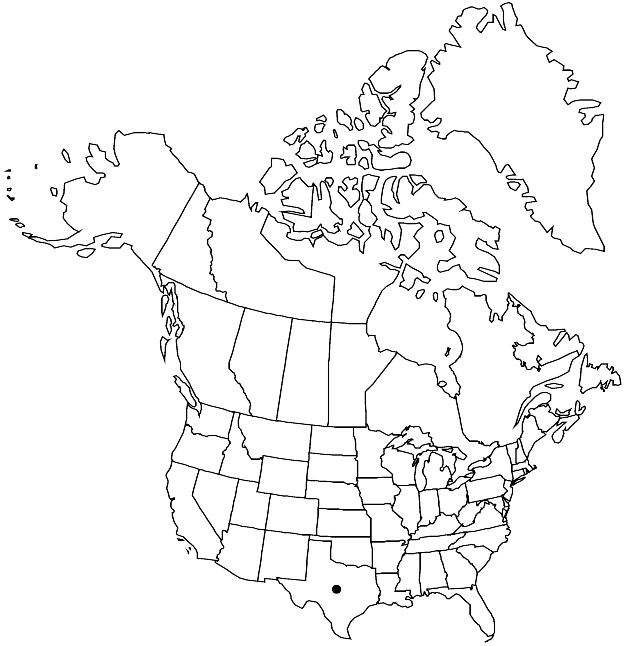Streptanthus bracteatus
Gen. Amer. Bor., 146, plate 60. 1848.
Annuals or biennials; (glaucous); usually glabrous, (sometimes pedicels pubescent). Stems often branched distally, (2.3–) 4.5–12 dm. Basal leaves not rosulate; long-petiolate; blade oblanceolate to spatulate, 5–25 cm, margins lyrately lobed to irregularly dentate. Cauline leaves: blade oblong to ovate, 3–15 cm × 15–80 mm (smaller distally as bracts), base auriculate to amplexicaul, margins entire or shallowly dentate. Racemes bracteate throughout, (proximalmost bracts leaflike, distalmost much reduced). Fruiting pedicels divaricate-ascending, 7–19 mm, (glabrous or puberulent). Flowers: calyx campanulate; sepals (ascending to suberect), 8–12 mm, (not saccate basally), not keeled, (inner pair apiculate); petals purplish, 14–19 mm, blade 7–12 × 5–7 mm, margins not crisped, claw 6–8 mm, (slender), much narrower than blade; stamens tetradynamous; filaments: median pairs (distinct), 6–8 mm, lateral pair 4–6 mm; anthers (all) fertile, 4–6 mm; gynophore 1–2 mm. Fruits divaricate ascending, smooth, straight, flattened, 8–14.5 cm × 2.5–4 mm; valves each with prominent midvein; replum straight; ovules 48–80 per ovary; style 1–3.5 mm; stigma 2-lobed. Seeds oblong, 3–4 × 2–3 mm; wing 0.5–0.7 mm wide at apex, continuous.
Phenology: Flowering Apr–Jun.
Habitat: Openings in oak-juniper woodlands, shallow, well-drained, gravelly clay-loam areas derived from limestone, dry rock hills, bluffs
Discussion
Of conservation concern.
Streptanthus bracteatus is restricted to Austin, Bandera, Blanco, Medina, Real, and Travis counties. It is in the Center for Plant Conservation’s National Collection of Endangered Plants.
Selected References
None.
Lower Taxa
"elongated" is not a number."thick" is not a number."dm" is not declared as a valid unit of measurement for this property."dm" is not declared as a valid unit of measurement for this property.
